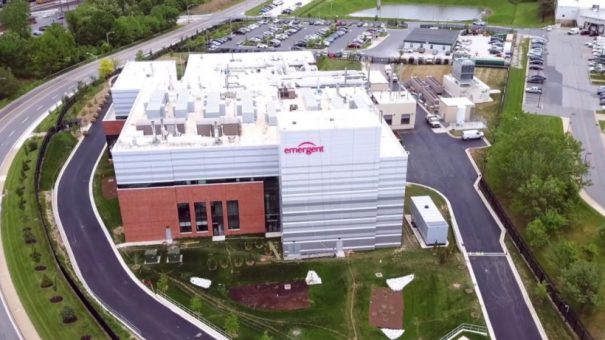
The U.S. Food and Drug Administration said this week it will not allow the release of any vaccine made under contract at the Emergent Biosolutions plant in Baltimore, Md. — and still in the U.S.— until it’s been tested further.
But Health Canada said AstraZeneca has assured the government a contamination event at the Emergent plant that led to a recent FDA inspection had no impact on the 1.5 million doses of its vaccine shipped here.
“All products in Canada met authorized specifications before they were released to the market,” Anna Madison, a spokeswoman for the department, said in a statement.
“COVID-19 vaccines are subjected to the same independent, rigorous scientific reviews, quality standards, testing and post-market surveillance as all other vaccines approved for use in Canada.”
Madison said the last of the 1.5 million doses of AstraZeneca vaccine made at the Emergent plant were distributed to the provinces the week of April 5.
Though uptake on that particular shot was slow at first, its use has surged in recent days after some provinces made it available to a broader age range of Canadians. B.C. authorities said Thursday they had all but expended their allotment.
Canada also obtained 500,000 AstraZeneca doses made under contract by a company in India, and 300,000 manufactured in South Korea through the COVAX project.
AstraZeneca said in a statement Thursday the vaccine it sent to Canada in March was done so at the request of the U.S. government and “met the stringent requirements” the firm must follow.
“Required safety tests and quality control measures are carried out at each step of the production process,” the company said. “All checks were met prior to the release of the batches.”
The Food and Drug Administration released a report Wednesday that outlined a number of issues with Emergent’s Bayview plant in Baltimore that it said could potentially affect the quality of the products it made.
They ranged from inadequate training of staff to not cleaning equipment at appropriate intervals to “prevent contamination that would alter the safety, identity, strength, quality or purity of the drug substance.”
Emergent had earlier agreed with the agency to halt production at the plant until the problems are fixed.
In the meantime, the FDA said that none of the vaccine made at the factory so far would be distributed in the United States.
“For the vaccines already manufactured, the products will undergo additional testing and will be thoroughly evaluated to ensure their quality before any potential distribution,” the agency said in a news release. “We will not allow the release of any product until we feel confident that it meets our expectations for quality.”
Amir Attaran, a law professor and drug-policy expert at the University of Ottawa, said any of the Emergent-made vaccine not already administered in Canada should now be shelved.
And he said he’s not even sure if potential problems could be uncovered by an inspection after the fact.
“It is impossible to “inspect in” high quality to a product that started life as low quality,” charged Attaran. “There is absolutely no option but to throw these doses away, like the other doses manufactured in that factory which the Americans are not allowing to be used. No way should Canadians be offered these doses.”
Emergent has manufactured vaccine under contract for both AstraZeneca and Johnson & Johnson.
Controversy first erupted in March when it was revealed that cross-contamination at the Baltimore plant had ruined 15 million doses of the J&J product.
U.S. media reports indicated that the contamination came from the harmless virus used in the AstraZeneca vaccine being manufactured in the same facility.
The companies agreed after the incident to no longer make AstraZeneca’s shot at the plant to avoid any cross-contamination, while the FDA carried out an extensive inspection of the facility that finished on Tuesday.
The resulting report outlined a number of issues around the company’s investigation into the Johnson & Johnson incident, saying it had failed to thoroughly probe the “unexplained discrepancies.”
But the report, citing security camera footage and other evidence, also detailed several other, broader concerns about how the facility operated.
It said the building was not maintained in a “clean and sanitary condition,” saying for instance that waste is not properly decontaminated before being taken through the warehouse for disposal.
There were also areas of peeling paint and damaged wall boards, which would undermine Emergent’s ability to clean and disinfect the area.
The warehouse was also overcrowded with materials destined for the manufacturing process and samples for quality control, said the report.

Among other concerns, it also said Emergent had failed to adequately train workers involved in manufacturing, quality control and other areas to “prevent cross contamination of bulk drug substances.”
AstraZeneca’s vaccine has been clouded somewhat by suspicions it is linked to a rare blood-clotting problem. But scientists say the benefits of taking the shot — and avoiding seriously COVID-19 illness — easily outweigh slim risks.





